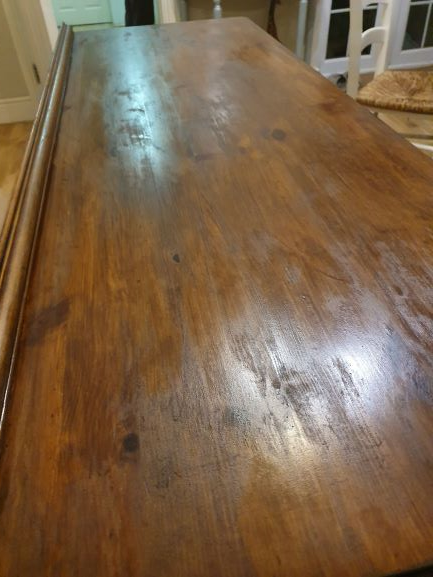The colour looks alright when viewed from the top and it all looks good when the stain is freshly put on but as it dries, and from the side with the light, you can see lots patchiness on the surface.
You're actually describing two different things here and the second isn't necessarily related to an incomplete removal of the previous finish (and in this case doesn't appear to be). From the title I expected to see bad pale areas where the stain barely took, a very common issue when staining furniture that was previously finished as it is hard to remove every trace of the old finish.
The irregular surface gloss seen in the photos is merely due to variable absorbency of the wood. Plus, there actually isn't any finish on this yet. Oil-based stain is a colouring product, not a finish, and any gloss achieved so far is merely an incidental byproduct of the oil binder used in stains of this type.
Evening up surface gloss is one of the roles of final finish AKA topcoat, which is what you need to use next after giving the stain sufficient time to dry. All stains need to be covered by some sort of clear finish to protect against wear, minor scratches or dings revealing bare wood. The product literature should cover this, and likely also gives recommendations on what you might use.
For future reference, in case you want to do more stuff like this, sanding is the worst way to remove old finish as touched on in numerous previous Answers here. Stripping using a chemical stripper (many of which are now quite safe compared to some older types) should be the preferred method, with sanding a distant third.

